COMALCALCO
Archaeological Site of COMALCALCO, TABASCO
Comalcalco is a pre-Hispanic settlement that is known for its unique construction techniques and materials. The name of the settlement comes from the Nahuatl language and traditionally translates to “comales house,” which refers to the use of comales, or traditional clay griddles, in the area. However, some archaeologists believe the name could also mean “house of bricks.”
The settlement is divided into two different construction periods, each with its own distinct characteristics. The first period, which is the oldest, involved building structures by piling up earth and modeling them into shape, before covering them with stucco. This stucco was made from a mixture of sand and lime, which was extracted from the shells that are abundant in the region. The structures were then decorated with modeled figures or painted designs.
The second period is characterized by the use of fired bricks to construct walls, stairways, ceilings, and floors. These bricks were used to create some of the most striking and impressive elements of the settlement, such as walls that were decorated with modeled or painted stucco.
The area is made up of a monumental area of three main complexes, each of which has its own unique architectural style. The two largest complexes are the North Plaza and the Great Acropolis, which are both open to visitors. However, there are also a large number of isolated buildings that have been located around these complexes, which are not currently in a condition to be visited.
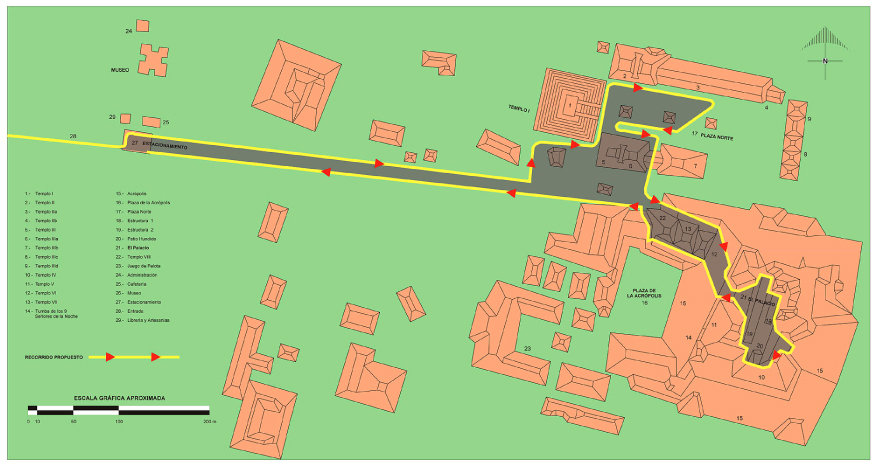
History of COMALCALCO
The history of Comalcalco dates back to the Preclassic period, with its peak occurring during the Classic period, approximately from 200 to 1300 AD. However, the city was eventually vacated during the Postclassic period. The central portion of the city is home to the ceremonial and civic sector, where monumental constructions and decorations are observed. Through excavation work, it has been deduced that these buildings were used for various purposes.
Investigations at the site have also revealed that Comalcalco had influences from other parts of the Mayan zone. For example, figurines found in the city are similar to those found in the pre-Hispanic towns of Jaina and Jonuta, located in Campeche and Tabasco, respectively.
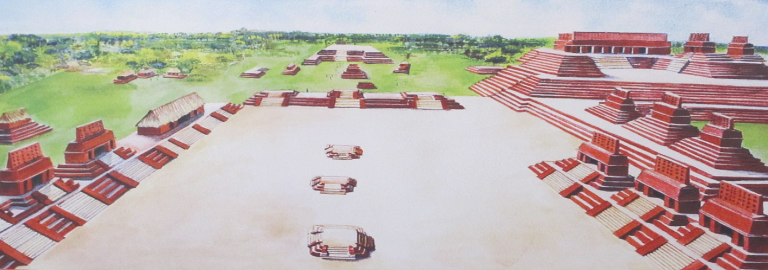
The history of Comalcalco dates back to the Preclassic period, with its peak occurring during the Classic period, approximately from 200 to 1300 AD. However, the city was eventually vacated during the Postclassic period. The central portion of the city is home to the ceremonial and civic sector, where monumental constructions and decorations are observed. Through excavation work, it has been deduced that these buildings were used for various purposes.
Investigations at the site have also revealed that Comalcalco had influences from other parts of the Mayan zone. For example, figurines found in the city are similar to those found in the pre-Hispanic towns of Jaina and Jonuta, located in Campeche and Tabasco, respectively.
Description of COMALCALCO
North Plaza set
The North Plaza set is a collection of ancient constructions located around a rectangular square. The central part of the square features three small mounds or sanctuaries, and the complex as a whole is oriented from east to west. One of the main buildings within the complex is Temple I, located to the west of the square. The central staircase of this building was constructed using earth and stucco, which has resulted in restrictions on visitor access in order to preserve the stairs from deterioration. In the southeast corner of the building, there are three levels of figures modeled in stucco that were once part of the building’s decoration and depict various characters and animal remains.
Temple I
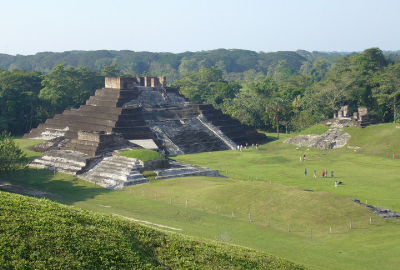
Another notable feature of Temple I is that during the second period of its construction, twelve bodies with sloped walls and a sanctuary on top were added. The sanctuary consists of two rectangular rooms, with the first room being limited by side walls and the remains of two pilasters, forming three entrances. The second room is located behind the first and has an altar in front of its entrance.
Temple II
To the north of the complex is Temple II, a long platform that only allows for the main façade to be viewed. This façade is constructed using earth and stucco up to a landing, and a more recent addition to the building includes a stairway, new walls, and a temple on top, all built using bricks. Adjacent to Temple II are two other temples, known as Temple II-A and Temple II-B, which have yet to be explored.
Temple III
To the south of the square is Temple III, a pyramidal base that is next to two other buildings. From these buildings, the facade of the so-called Temple IIIB can be seen. Temple III displays two different construction techniques and the remains of rooms located in its upper part are still visible. On the east side of the square, there is a long, low platform that has yet to be explored. Along the front of this platform, modern stairs have been added to allow access to the second construction group, known as the Great Acropolis.
Temple III-A
It is a basement structure that has only been partially explored. Due to its construction method, which utilizes rammed earth with stucco coating and oyster shell, the preservation of the temple is inadequate. As a result, it can be challenging to comprehend the layout and organization of its architectural elements.
One of the notable features is the room located to the east, next to the central staircase. It appears to have a niche and a bench, although the exact purpose of this room is uncertain. The overall structure appears disorganized, with bodies that are not aligned in any particular order. The walls and floors are covered with a layer of stucco and shell, which adds to the difficulty in understanding the layout.
Additionally, in the northwest corner of the temple, there are five different floor levels, which further adds to the confusion about the temple’s design and purpose.
The Great Acropolis
The Great Acropolis in the Mayan city of Comalcalco, Tabasco is an architectural complex that comprises of a series of possibly civil and religious buildings, arranged on different levels. The complex is situated on an artificial platform that has a maximum height of 35 meters and is 175 meters long at the base of the east side.
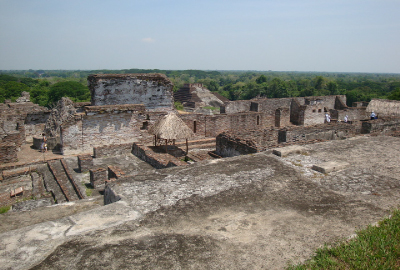
It is approximately rectangular in shape with its longitudinal axis oriented in a north-south direction. From its northwest and southwest corners, two adjoining basements emerge that face west, presenting the entire complex in the shape of a “U”, which delimits three sides of a square. The complex includes a series of temples, tombs, terraces, and patios, but the most important construction is the Palace.
The Palace
The Palace is situated at the center of the basement and measures 80 meters long, 8 meters wide, and 9 meters high. It consists of two parallel galleries running from north to south, with its main façade facing west. The west gallery consists of a vestibule with eight entrance openings, limited by rectangular pilasters. The openings measure between 2.50 and 4 meters, and the ceiling must have been supported by wooden lintels, as can be seen in some details.
Towards the southern end of it, there is an altar leaning against the wall. Both galleries communicate through five open clearings on a central wall that divides them. The east gallery has six rooms, most of which have an exit to the rear of the Palace, and one of them has an altar attached to the east wall. As the only decoration, the Palace currently shows four small niches in the central wall, in front of the east gallery. It also shows some narrow rectangular holes, like windows in the east wall and remains of red paint on the walls.
A few traces of the ceiling remain on the central wall. Additionally, some temples also have a vaulted chamber for funerary use inside the basement on which the temples are built, which perform the double function of temple and tomb. The patios stand out, an altar inside the Sunken Patio, as well as the pond located to the east of the Palace. This set represents the continuous building of structures over time, which were annexed to the existing ones according to the space needs of its inhabitants.
Sunken Courtyard
The southern part of the terrace of the Great Acropolis is home to several structures that are arranged on sidewalks, which together form a sunken courtyard. To the north, the courtyard is delimited by a residential structure (Structure 2), to the east by Structure 3, to the west by the back of the Palace, and to the south by Temple IV. Measuring 23 meters in length and 11 meters in width, this courtyard is a unique feature of the Great Acropolis.
Further investigation of the courtyard revealed the presence of a complex hydraulic network under the floor, consisting of embedded mud tubes that connected to open channels. These channels allowed for the drainage of water from the group of buildings and corridors located on top of the Great Acropolis.
Structure 1
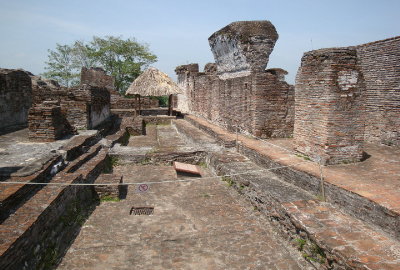
One of the structures within the courtyard is Structure 1, which is made up of two parallel masonry rooms that are built on a sidewalk and oriented from south to north. The walls of Structure 1 still retain traces of red pigment, and the main façade, which includes a portico, faces west towards a corridor that connects it to the Palace. Additionally, there is a small entrance with a short stairway that faces north, leading to Structure 4. Inside the front room of Structure 1, there is a niche and several dividing walls, which were possibly used for the domestic activities of the families that lived on the Great Acropolis.
Structure 2
It is another construction within the courtyard, which is erected on a small bench and consists of a single room that is accessed from the Sunken Patio. Excavation of Structure 2 revealed that the ceiling was vaulted and decorated inside with large-sized modeled anthropomorphic motifs. The function of Structure 2, like that of Structures 1, 3, 4, 5, and 6, could have been as a residence for the elite.
Between Structures 1 and 2, there is a lower-level space that is accessed by a couple of steps. This sunken enclosure, also known as the “Pond,” is connected to a clay urn of considerable dimensions, which has a small perforation at its base. The perforation allowed the water contained in the urn to be poured into the “Pond.”
The function of this element was likely related to ritual activities of the resident population and was probably also used to cool down the warm atmosphere that prevails in the region during most of the year.
Structure 3
Located within the Great Acropolis, is a unique construction that stands out for its height and prominence. Despite being modern in comparison to other structures, it is built with earthen cores covered with stucco, a construction system that is older than brick masonry. The building offers an unobstructed view in every direction, as there are no other buildings blocking the view.
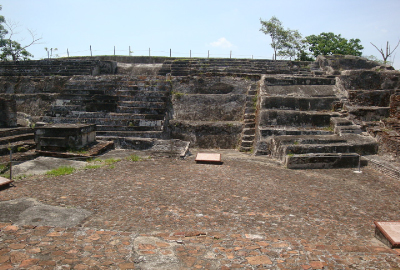
Upon examination, several superimposed talus bodies and previous construction stages were discovered. Earth was also used in these earlier stages of the building. In one of the substructures, it is still possible to observe a cubic structure called “dado” that could have served as a pedestal to place censers or torches.
The uppermost part of the building was found to have several superimposed stucco floors and tiny brick platforms, which may have served to place wooden posts. The roof was likely made of perishable materials. In front of the Structure, there is a small altar, on which numerous clay beads were located, as well as a small bundle covered with blue painted stucco.
Structure 4
It is another unique construction that features a series of superimposed bodies with a pair of staircases on its north façade. These staircases converge into one after a short rest before reaching the top. In the upper part of the basement, there was possibly a one-room building oriented from east to west, of which only the beginnings of a wall remain.
On its south façade, a series of figures modeled in stucco can be seen, which represent a succession of seated characters dressed, of which some torsos and extremities have been preserved. In the west corner of the building, there is a fragment of the head of a bird with its eyes closed that holds an element in its beak that seems to represent a bead, perhaps a green stone or “chalchihuite”.
Temple IV
Temple IV is another unique structure that was discovered to have a funerary crypt that had been covered when the staircase was built. At the foot of this temple, in the so-called “Southwest Plaza” a multiple burial was discovered. This structure is located about 12 m towards the southeast end of the Palace. It measures approximately 18.50 m in front by 7.50 m in depth and a height of 10 m. Facing west, it overlooks a small square located on a lower level than the Palace.
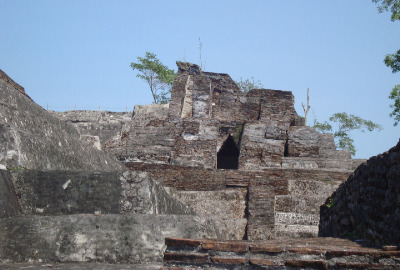
The temple is a small basement of stepped bodies with a central staircase on which a temple with two rooms rises, one that served as a vestibule and that communicates to the other that corresponded to a sanctuary that has an altar attached to the rear wall. In the vestibule, there are two pilasters that delimit three clearings that serve as access to the temple. One more entrance connects the vestibule with the sanctuary that has an altar attached to the rear wall.
In the core of the basement, under the temple, a tomb was found with the walls decorated with stucco figures, which unfortunately had disappeared. This chamber had a brick roof and a mixture of oyster shell, and it is possible to observe inside and outside, signs of having been decorated with stucco. In the upper part of the temple room, there are remains of a stucco frieze.
During the excavation, it was found that the temple was decorated both inside and outside, with large anthropomorphic sculptures. The characters were modeled with a mixture of lime obtained from oyster shells on brick cores. Some of these sculptures can be seen in the site museum. The temple serves as a unique and interesting excavation site, providing a glimpse into the ancient past and the construction techniques used by the ancient builders.
The Tomb of the Stuccos
Also known as the Tomb of the Nine Lords of the Night, is a significant archaeological site located in the southeast of El Palacio in Comalcalco. Measuring 3 by 3 meters and standing at approximately 2.8 meters tall, it is considered the most important of the three tombs discovered in the area. Despite being similar in distribution and proportions to the Temple IV tomb, this tomb has lost most of its upper temple and only the basement and funerary chamber remain. The interior walls of the tomb feature nine characters in stucco relief, accompanied by hieroglyphic inscriptions.
Temple V
Temple VI
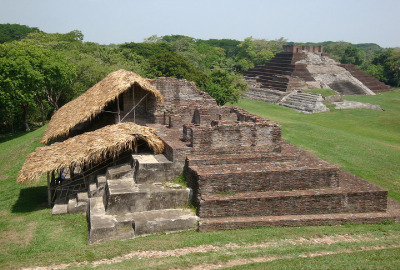
Also known as the Temple of the Mask, is located in the northwestern extension of the Great Acropolis. It was originally referred to as Temple 4 by explorer Frans Blom and “Basamento del Mascarón” by Piña Chan. It is located in a kind of arm that also houses other structures called Temple VII and Temple VIII by Andrews. This temple measures 15 meters in front by 12 meters in width and stands at a height of 10.50 meters.
It has two construction periods, with the oldest visible on the main façade dating back to the earliest construction period in Comalcalco. It is a stepped basement with three bodies, of which the lower one is lower than the other two, resembling a kind of bench interrupted by the central staircase and limited by balustrades. At its base, there is a mask related to the Solar God. The second construction period of the temple is made of brick and can be seen on the north, east and west faces.
The upper Temple also corresponds to this period and rests on a low plinth, with its façade facing south. The Temple has the same distribution as the previous ones, consisting of a vestibule and a sanctuary, with an altar in the center. The ceiling of these two chambers was likely a Mayan vault like the one in the Palace.
Temple VII
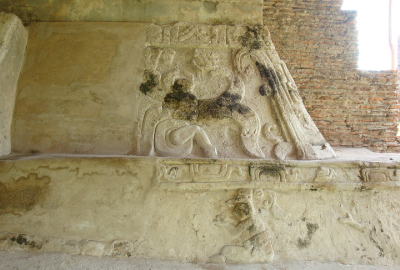
Also known as the Temple of the Seated Figures, is located on the west side of the Temple of the Mask and its main façade faces south towards the plaza of the Great Acropolis. It is a monument similar to Temple VI but larger, with two construction periods. The oldest, visible on the south side, is a stepped basement with two low inclined bodies and a third taller one.
In the center, there is a staircase, whose first two steps protrude from the basement cloth. The temple measures 17 meters in front, 15 meters in width and stands at a height of 4.50 meters. On the north side, it has three staggered bodies with remnants of an altar that preserves the remains of a figure modeled in stucco.
El Popol Naah
El Popol Naah is a construction located on top of the Great Acropolis that features a bench displaying a scene modeled in stucco. The scene includes a representation of a set of bands symbolizing the “royal mat” with the beak of a black vulture and an account in its mouth, as well as three seated characters.
A significant number of remains of animals that were used as food and turned into ornamental artifacts and musical instruments have been found at the site. These findings suggest that the activities carried out in this place were linked to music, dance and prayer, and that they were carried out by the ajk’ubuum and the sajal.
South West Square
The South West Square at the Comalcalco archaeological site is a unique and intriguing space with a rich history. The square is bordered to the north by a platform that supports Structure 6, to the east by Temple IV, and to the west by Structure 5. Beneath the floor of the plaza, in front of Temple IV, a multiple burial was discovered, which included crossed bones, obsidian carving debris, and shell and snail objects. These artifacts likely had some connection to a ritual related to the construction of the temple.
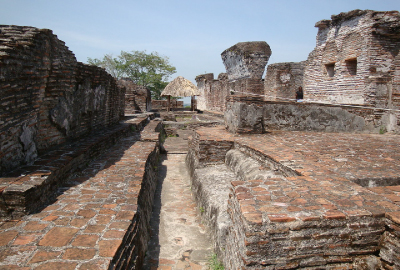
On the surface of the plaza, there are two semicircular stones that are positioned towards the middle of the stairway of Temple IV. These elements, along with the skull embedded in Temple I and the fragment of stela located near the mound of La Palmera, are the only examples of stone sculpture found at the site thus far.
Structures 5 and 6 are one-room spaces made of masonry that could have served as rooms for the dominant group, despite their small size of only 10 m² of occupiable surface. These constructions were decorated with characters made of stucco.
East Acropolis
The East Acropolis at the site can be considered a smaller version of the Great Acropolis, although masonry buildings are not visible to the naked eye. This group appears to have a connection to the complex of the North Plaza and its orientation is also related to the cardinal points.
Drainage System
The Comalcalco site also has an impressive drainage system that runs under the entire city. This system was made with cylinders made from materials typical of the area, such as clay, creating a deep drainage system to evacuate waste and rainwater.
Graveyard
In addition to the South West Square, the Comalcalco site also includes a graveyard. On June 28, 2011, the National Institute of Anthropology and History announced the discovery of what is believed to be the first Mayan cemetery known to date, with a total of 116 funerary burials that are over a thousand years old. These burials were located in three mounds of earth with an area of 220 m² located on the periphery of the archaeological zone.
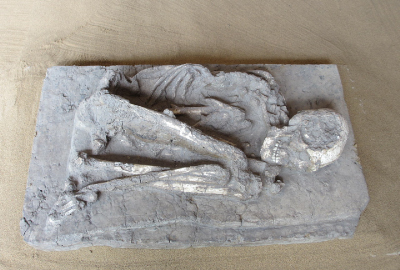
The archaeologists found 66 bodies deposited in funerary urns with average dimensions of 35 to 75 cm high and 35 to 80 cm in diameter, and the remaining 50 were found around them. This discovery suggests that the individuals in the urns could have belonged to the Mayan elite, while the others were their companions.
Some of the skeletons found in the urns also displayed cranial deformations and filings and jade inlays in dental pieces, indicating that these people belonged to a high social stratum. In addition to the human remains, the funerary burials also included ceramic whistles and rattles that depict both animals and richly dressed men and women, dozens of razors, knives, and debris from flint and obsidian carvings, multiple fragments of metates, more than 70,000 “tepalcates” (vessels), and the complete skeleton of a dog.
The presence of a dog skeleton is a pre-Hispanic custom, as the animal was believed to serve as a companion on its journey to the underworld. 28 of the funerary burials were found in a perfect state of conservation because they were found at a depth of 2 m and covered with an oyster shell base and lime. When mixed with water, the lime formed a paste that adhered to the bones, resulting in greater protection and preservation of the bones.
Additionally, three closed ovens were found “in situ” on a layer of oyster shells. It is believed that these ovens could have been used for cooking the tamped mud that covered this funerary deposit in order to protect it.
Decorated bricks
The ancient Mayan city of Comalcalco is renowned for its use of bricks in construction, many of which were decorated with intricate engravings by Mayan artisans. These engravings were hidden from view on the exterior of the buildings, as they were covered by a stucco mixture used to join the bricks together.
The discovery of these engravings was made by exploring the rubble of collapsed buildings, which revealed the intricate designs on the partitions. To date, a total of 4,601 engraved bricks have been discovered and classified into various groups.
Animal representations
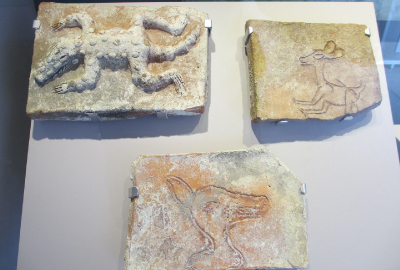
Animal are also represented in the engravings, with primates, toothless cervid rodents, and other species depicted in various postures and positions. Some of the animal figures have ornaments on their bodies or heads, and depictions of mountain rats and rabbits are also present.
Human representations
One of the most prevalent themes in the engravings are human representations, which range from richly dressed characters to simple sketches of human bodies. Various positions and styles are depicted, including sitting, standing, walking, frontal and profile views, as well as female figures, men with headdresses, earmuffs, and bracelets. Nude subjects are also present, with some depicted in a sitting position with cranial deformation.
Fantastic beings
Fantastic beings are another theme found in the engravings, with figures showing humanized animals and men with zoomorphic attributes, as well as faces of deities and stylized animals.
Architectural renderings
Architectural renderings are also present in the engravings, depicting temples with crests, residential houses, and isolated architectural elements. Although the crests of the buildings have disappeared, they are still prominently represented on the bricks.
Geometric themes
Geometric themes are the most numerous and varied in the engravings, ranging from simple lines to complex polygons. Designs are decorated inside or outside with other geometric shapes, including lines and bands, circles, crossed lines and bands, fretwork, triangles, grids, squares, rectangles, fans, and crosses.
Glyphs
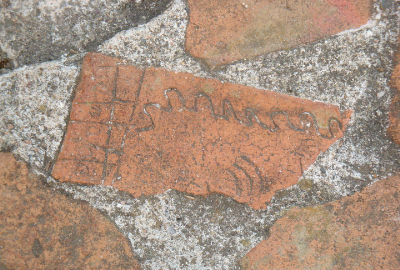
Glyphs, or symbols, are also frequently found in the engravings, primarily depicting calendrical dates with the glyph representing the name of a day accompanied by a numeral. Unlike traditional Mayan calendar numbers, which cannot exceed 13, representations of larger numbers can be found in Comalcalco.
The quality of the execution of the glyphs varies, from careful strokes to childlike drawings. Serial representations of glyphs and representations of inscribed monuments are also present.
Petates
Another unique theme found in the engravings are “Petates”, which resemble the “mats” currently woven in various communities in Tabasco. These designs were created using the “impression” technique, although two partitions were found that were engraved using the “incision” technique.
Intertwined fibers
Intertwined fibers are also present in the engravings, depicted as bands in the form of “xes” that touch the four corners of the brick after forming a simple intertwining in the center. The bands are decorated with short incised lines on the edge, resembling two branches or ropes. Another representation consists of a single band enroyada as a “cord,” which is a well-known element in Mayan iconography.
Misc
Lastly, there are also engravings that are impossible to identify due to their size or erosion. Bricks with irregular spots or bands that do not fit into other classifications are also present.
COMALCALCO Site Museum
The Comalcalco Site Museum offers visitors an opportunity to explore the ancient history of the Maya people of Comalcalco, also known as the Joy’Chan. The state of Tabasco is primarily a flat plain that has been shaped over the centuries by the flow of multiple rivers, creating a landscape rich in clays of various colors and textures.
The Maya of Comalcalco utilized this clay as a primary raw material for creating a wide range of objects, including ornaments, sculptures, funerary urns, pipes, whorls for spinning, musical instruments, and vessels and spoons for preparing and serving food. They also used clay bricks to construct their homes and temples.
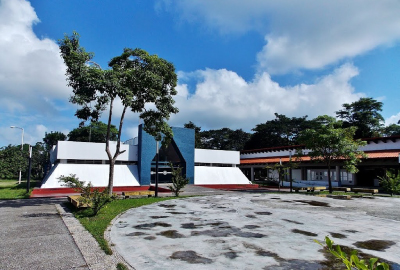
The Comalcalco Site Museum houses a collection of these objects, allowing visitors to imagine the foods and drinks that were prepared in the containers, as well as how the ancient inhabitants of the city dressed and adorned themselves. Visitors with an interest in math will enjoy the challenge of calculating how many bricks were required to build one of the Comalcalco structures, based on the dimensions of the bricks on display.
The pieces in the museum come from two different collections. The first was assembled by Professor Rosendo Taracena in the early 20th century, and the second by the poet Carlos Pellicer prior to 1972. The museum was officially established by the INAH on June 16, 1984, with a script written by Amalia Cardós.
In 1994, the space was remodeled and re-opened on October 8, with a new concept developed by Román Piña, Ricardo Armijo, and Mario Pérez. In 2012, the museum expanded with the addition of a second room and new content, with a script written by Ricardo Armijo and Miriam Judith Gallegos. This expansion also allowed for the display of previously unseen pieces, as well as those recently discovered during archaeological excavations.
The Comalcalco Site Museum serves as a public space for understanding and questioning the present through the lens of the past. It provides an opportunity for individuals to engage in dialogue about humanity and its relationship to the environment throughout history, and serves as a melting pot for learning and coexistence. The museum’s collection represents a common heritage that is deeply rooted in the identity of the region.
More Tourist Attractions in TABASCO
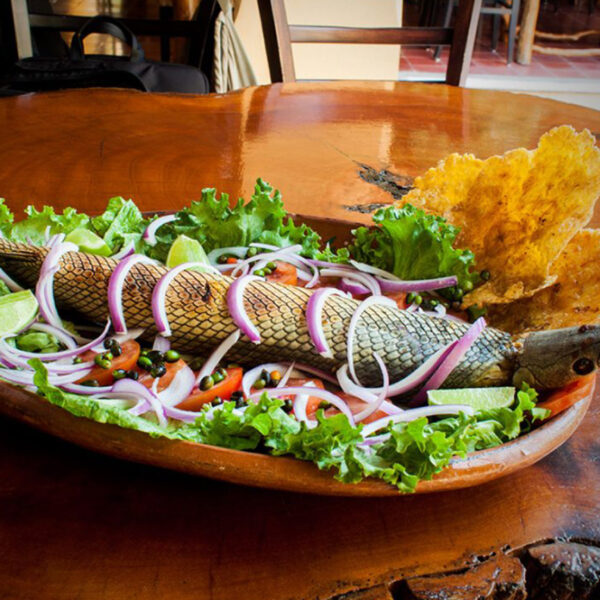
Gastronomy of Tabasco
The gastronomy of Tabasco is a reflection of the diverse cultures that have influenced the region throughout its history. From the indigenous Maya and Olmec people to the Spanish colonizers, the flavors of Tabasco have been shaped by a unique blend of ingredients and techniques.… Read More
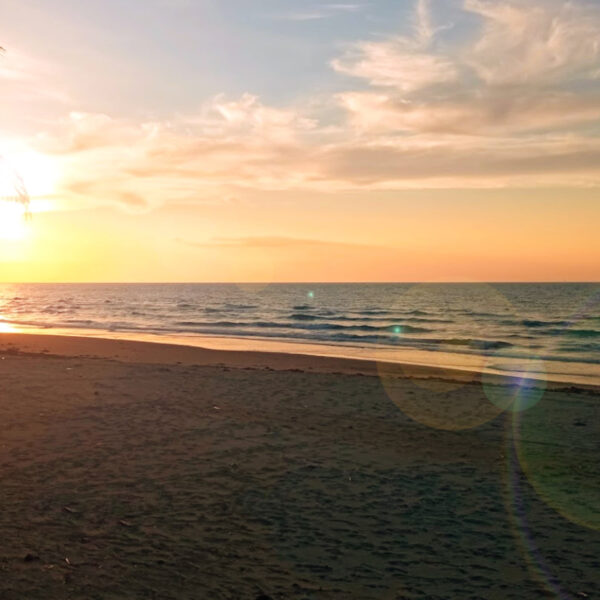
Beaches in Tabasco
The state is home to a wide variety of beaches, each offering a unique experience for visitors. From secluded coves to bustling beaches, Tabasco has something to offer for everyone.… Read More
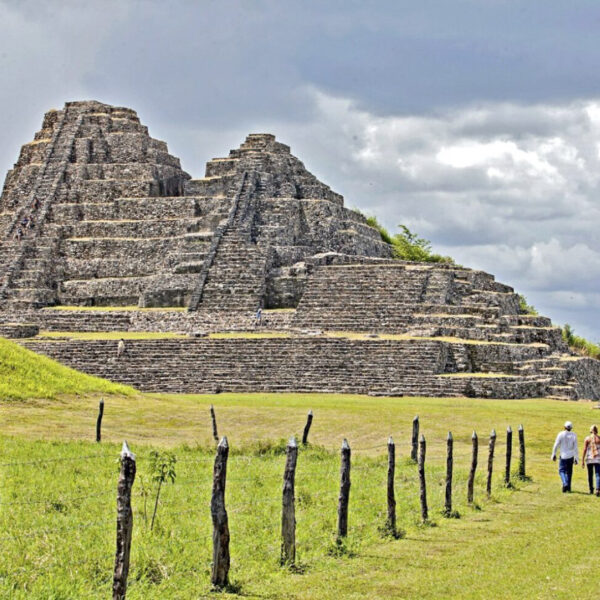
Archaeological Sites in Tabasco
Tabasco has been occupied by various indigenous groups for thousands of years, and as such, it is home to a variety of archaeological sites that offer a glimpse into the past. … Read More
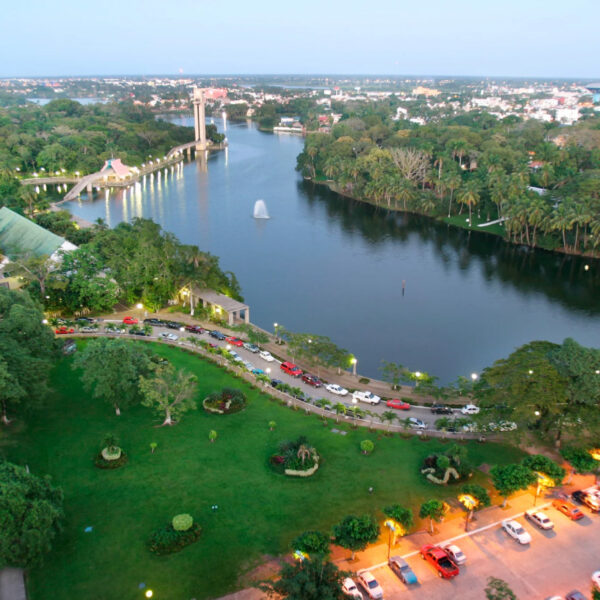
Villahermosa
Known for its lush tropical forests and diverse wildlife, Villahermosa is a popular destination for tourists looking to experience the unique culture and natural beauty of Mexico.… Read More
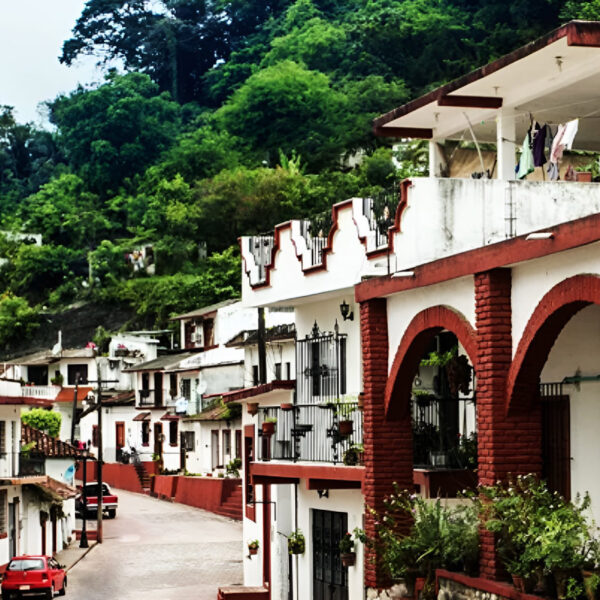
Magical Towns in Tabasco – Tapijulapa
The Magical Town in Tabasco, Tapijulapa, is considered an important destination for both national and international tourists, and is recognized for its natural beauty, traditional customs, and unique attractions.… Read More
Flights & Hotels in VILLAHERMOSA, TABASCO
More Tourist Attractions in MEXICO

Traditions in Mexico
It is practically impossible to make a meticulous, and above all, accurate selection of the places to visit in Mexico. Each place that our country houses is unique and beautiful in its own way. Mexico, with its nearly 2 million km², has a large number of scenarios to offer, as well as endless activities to do. Do not lose your way and enter the places to visit in Mexico. In Mexico, apart from the beaches and its famous archaeological sites, there are many other really interesting sites and activities that you should know. In the surroundings of the main cities you will find places full of culture and tradition, where you can spend relaxing, interesting and fun vacations. On your trip through Mexico you cannot stop obtaining souvenirs, the crafts that are made here are of the highest quality and recognized worldwide. A shopping tour cannot be missed.… Read More

Capital Cities
Folklore, gastronomy, literary culture, art and exhibitions, is what you will find in the capitals of the states of Mexico. To the north, colonial Mexico, Puebla, Guadalajara, Guanajuato, the Sonoran desert and the California peninsula. To the east Veracruz and the gulf. To the west Acapulco, Oaxaca and Tuxtla Gutiérrez. And to the south the Riviera Maya and the pyramids of Chichén-Itzá, Tulúm and Cobá in Yucatán, Palenque in Chiapas, the cenotes, and the Central American jungles.… Read More

Magical Towns
A Magical Town is a place with symbols and legends, towns with history that in many cases have been the scene of transcendent events for our country, they are places that show the national identity in each of its corners, with a magic that emanates from its attractions ; visiting them is an opportunity to discover the charm of Mexico. The Magical Towns Program contributes to revalue a set of populations in the country that have always been in the collective imagination of the nation and that represent fresh and varied alternatives for national and foreign visitors. A town that through time and in the face of modernity, has conserved, valued and defended its historical, cultural and natural heritage; and manifests it in various expressions through its tangible and intangible heritage. A Magical Town is a town that has unique, symbolic attributes, authentic stories, transcendent events, everyday life, which means a great opportunity for tourist use, taking into account the motivations and needs of travelers.… Read More

States Of Mexico
Mexico has an incredible diversity of landscapes, where the beauty of its beaches, internationally recognized, stands out. In its vast territory of coasts, there are beaches of unparalleled beauty, and colorful landscapes. A large network of first-class hotels and tourist services is available to visitors to these beaches. Mexico is also mystical places, dotted with archaeological testimonies inherited from its original inhabitants. Monuments made by the Mayas, Aztecs and Toltecs are located in magical landscapes, like lighthouses in an ocean of natural beauty. They offer visitors buildings that tell their history, and museums that collect their cultural heritage. And that keep alive ancestral traditions, in ceremonies and festivals, where you can enjoy cultural activities and entertainment.… Read More

Beaches
On the Beaches of Mexico you can immerse yourself in the intense blue ocean of the Pacific bays, sunbathe on the shore of the warm and transparent waves of the Caribbean Sea in Quintana Roo or even rest on the beautiful coasts of the Gulf of Mexico. Mexican beaches hide wonderful secrets for the traveler. By visiting them, in addition to enjoying the excellent climate and water activities, you can discover splendid archaeological sites and interesting colonial cities without traveling long distances.… Read More

Ecotourism and Adventure
Mexico is one of the best countries for Ecotourism as it has a great variety of flora and fauna, as well as a large number of refuges for extraordinary species. You can enjoy recreational activities of appreciation and knowledge of nature through contact with it, such as: stargazing, observation of natural attractions, wildlife and bird watching. Throughout México there are more than 176 protected natural areas, 5 of them considered by UNESCO as Natural Heritage of Humanity. Just for this and much more, we believe that Mexico is a Paradise for Ecotourism.… Read More

Gastronomy
The Gastronomy of Mexico has a great diversity of typical dishes, which is why it was recognized by UNESCO as Intangible Heritage of Humanity. The basic and representative ingredients of Mexican dishes are: corn, coriander, chili, beans, piloncillo, nopal and tomato. Mexican cuisine is also characterized by its sauces, which serve as an accompaniment to traditional dishes, prepared based on spices.… Read More

Archaeological Sites
The Archaeological Zones are the cultural past of every Mexican. You will be amazed at the ambient, nature and the environment that surrounds them. Climbing to the top or being around it will take us back in time to admire every detail. México is a country of culture and traditions, many of which we have inherited from the pre-Hispanic inhabitants of this vast territory, although it is true that there were more settlements in the central and southern part of the country, it is also possible to find some archaeological remains in the north.
… Read More

